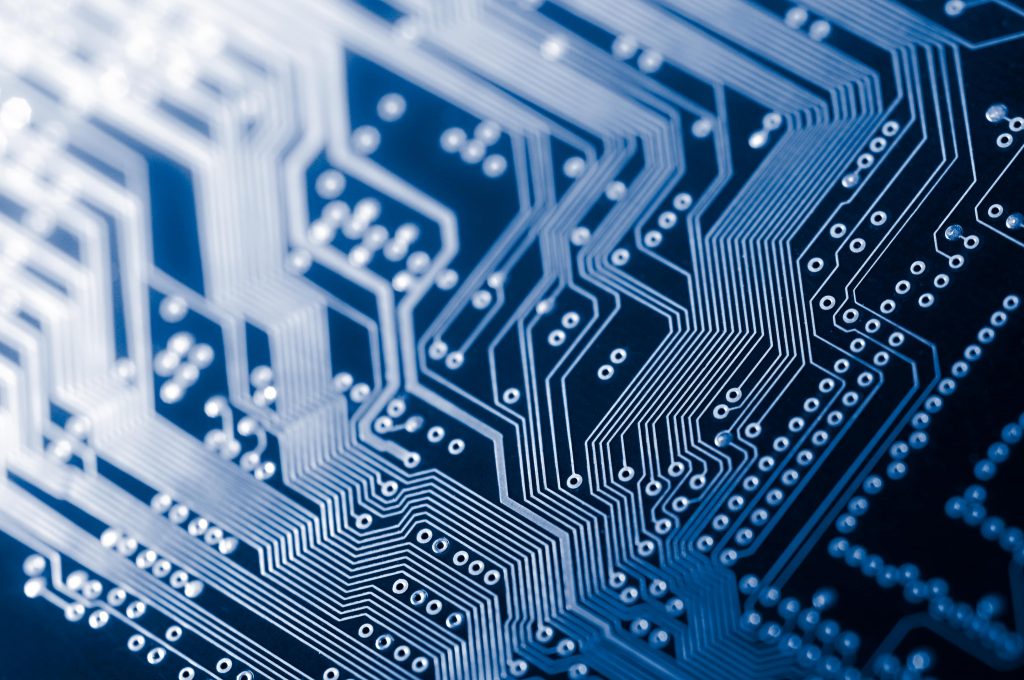PCBs for Aerospace Applications
Civilian air traffic is currently undergoing a transformative phase, with a keen focus on improving fuel sources, powertrains, and operational efficiency. While we acknowledge the challenge of meeting long-term sustainability goals, it’s equally important to address other pressing concerns. These include enhancing security measures in response to the growing volume of air traffic and the emergence of new digital and human threats within our rapidly evolving digital landscape.
In light of these challenges, we are committed to providing innovative solutions and technologies. Below, you will find a selection of applications that we serve, all of which contribute to the advancement of safety, sustainability, and efficiency in the aviation sector.
- Aircraft Radio Communication System: PCBs for radio communication system between aircrafts, flight control and pilots. Demands are IPC 6012 Avionics PCB standard AS9100.
- Aircraft Responder: PCBs for transmitting and receiving signals (XPDR), identifying the individual aircraft. Demands are high reliability and safety critical function, IPC Class 3 and AS9100 standard.
- Airfield Ground Lighting Systems: PCBs for airfield ground lighting (AGL) control systems. Demands are long service life, high reliability, and safety critical function.
- Civil Aviation: PCBs for engine, hydraulic, motion and actuator controls, power distribution, sensors and communication systems. These are the functions that keep us safe in the air. Climate, lightning and entertainment equipment systems gives us comfort in the cabin. Demands are typically IPC Class 3, ISO/AS 9100.
- Private Aircraft: PCBs for instrumentation and navigation, communication, weather data, airspace information and aircraft data. Demands are typically IPC Class 3.
- Radar: PCBs for radar applications: naval, satellite, defense, aerospace, aircraft, microwave antennas and associated signal transmission systems. Demands are signal integrity, high-speed computing and thermal management.
- Space Equipment: PCBs for high radiation (HI RAD), requires materials as Teflon or Polyimide for withstanding extreme surrounding temperatures. Demands are rugged and well tested PCB-solutions. Standards are typically IPC 6012DS, ECSS-Q-ST-70-60C and AS9100.
- Vision Systems: PCBs for thermal vision systems: IR-cameras and airborne camera pods. Demands are typically IPC Class 3.
- HDI | Multi-Layer | Rigid-Flex


Designing PCBs for Aerospace Applications
Printed circuit boards (PCBs) stand as vital components in the aerospace industry, serving as the backbone of electronic systems used in aircraft and spacecraft. These PCBs facilitate intricate electrical connections between components, ensuring the seamless flow of signals and power throughout various aerospace applications. In the demanding aerospace environment, PCBs require robust designs tailored to meet stringent requirements. Designers meticulously consider factors such as thermal management, high-frequency RF components, and impedance calculations to optimize performance. Utilizing mil-spec components with tight tolerances further enhances reliability. Despite facing extreme temperature fluctuations encountered in aerospace operations, PCBs must maintain functionality.
Choosing the right materials, especially for laminate substrates, is paramount to safeguard PCBs against the damaging effects of thermal expansion. ENIG (Electroless Nickel Immersion Gold) coatings are preferred for aerospace applications, providing high-quality results and corrosion resistance. While aerospace PCBs face unique challenges, meticulous design and advanced manufacturing techniques ensure their reliability and efficiency in aerospace operations, contributing to the safety and functionality of aircraft and spacecraft systems.
Thermal management is another critical aspect of aerospace PCB design, as high-frequency circuits often generate significant heat. Effective heat dissipation techniques, such as heat sinks, heat pipes, and thermal via arrays, are employed to maintain optimal performance and prevent catastrophic failures.
While standard FR-4 PCBs offer resilience, they may not suffice for extreme aerospace conditions. Alternative materials like Polyimide or ceramic are essential for cryogenic environments, providing resistance to temperature extremes. Polyimide’s flexibility and durability make it ideal for aerospace electronics, while ceramic offers unparalleled thermal resistance. Additionally, specialized techniques are employed for RF and microwave circuits in aerospace applications, ensuring optimal performance for wireless communication devices.
MCL offers expert guidance and top-quality solutions addressing the unique challenges of the aerospace industry.
Turn to MCL to ensure you’re incorporating all design considerations into your process. We have the technical expertise to address the unique challenges presented by aerospace applications, ensuring that your products meet the rigorous demands of safety, reliability, and regulatory compliance.
Get a Free Quick Quote

About Ceramic PCBs
Millennium Circuits Limited offers ceramic PCBs for your aerospace needs. Many users of PCBs find ceramic boards have a thermal resistance advantage over traditional boards made of other materials. This advantage is because these PCBs provide suitable ceramic substrates for electronic circuits with high thermal conductivity and low coefficient of thermal expansion (CTE).
The ceramic PCB is extremely versatile and can replace a complete traditional PCB with a less complex design and increased performance. You can use them in multiple products, like high-power circuits, chip-on-board modules and proximity sensors.
Advantages of a Ceramic PCB
Besides its enviable thermal properties and low CTE, ceramic PCBs come with a few other benefits. Review some of their advantages below:
- Safe operation in temperatures up to 800 degrees Celsius
- Simple implementation of high-density circuit tracing
- Exceptional high-frequency performance
- Versatile packaging, with an option to come in hermetic packages to prevent water absorption
- Tough chemical erosion resistance


